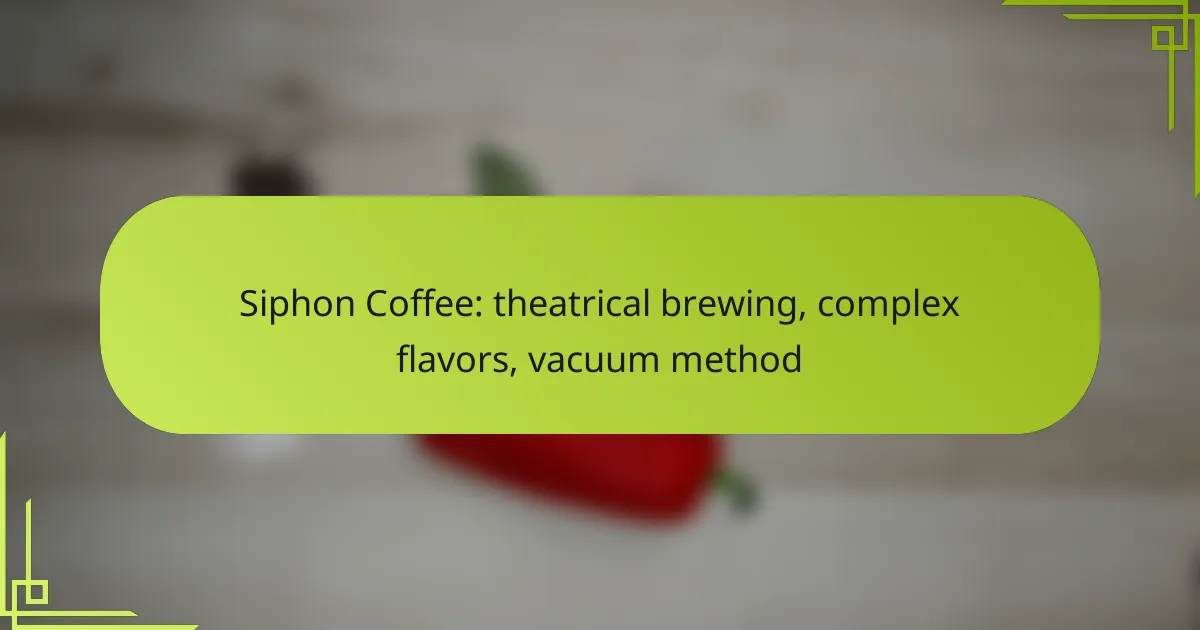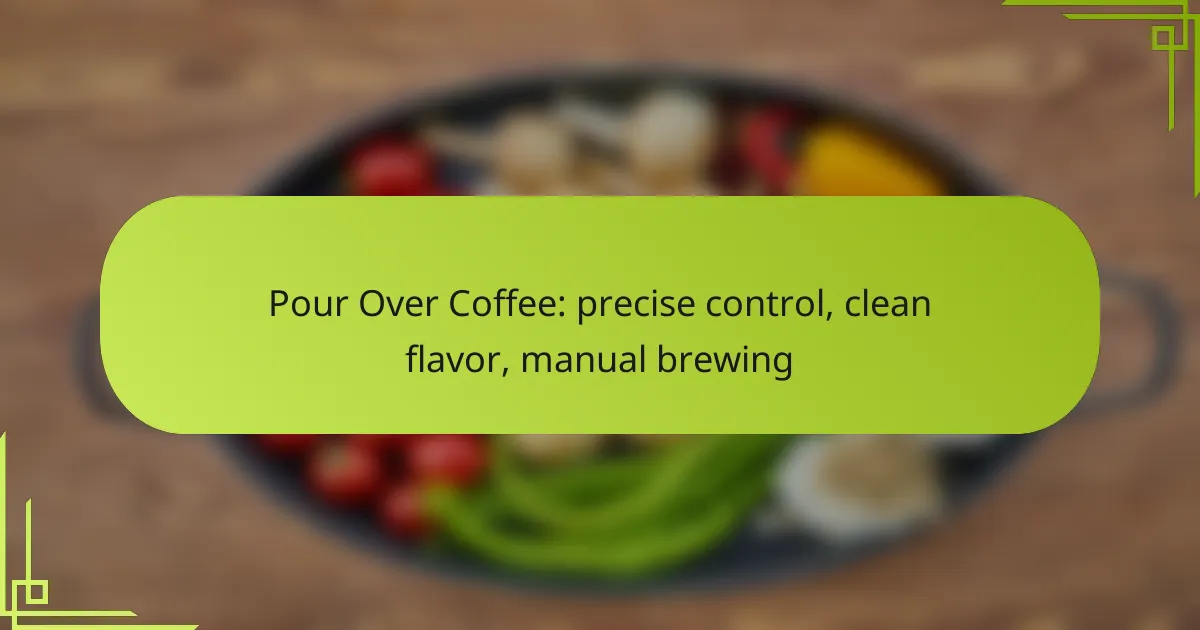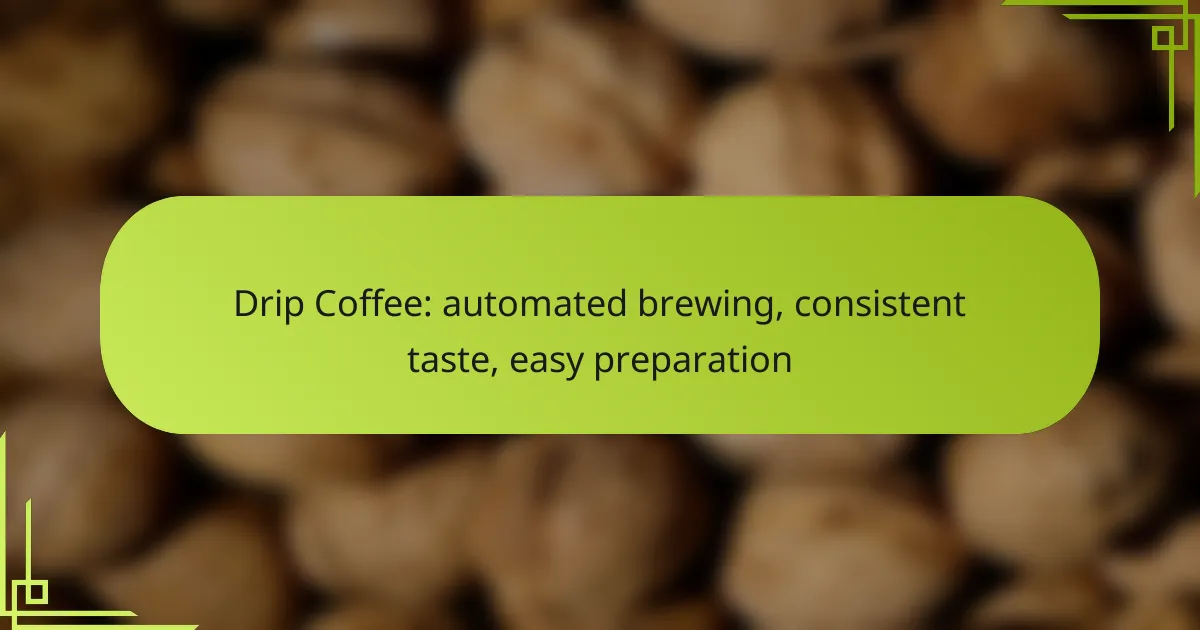Siphon coffee brewing is a captivating process that combines science and artistry, utilizing a vacuum method to extract rich and complex flavors from high-quality beans. This theatrical approach not only enhances the aroma and taste but also provides an engaging experience for coffee enthusiasts. With precise measurements and careful temperature control, siphon brewing delivers a unique flavor profile that highlights the intricacies of each coffee variety.

How to brew siphon coffee effectively?
To brew siphon coffee effectively, focus on precise measurements, temperature control, and timing. This method utilizes a vacuum process that extracts complex flavors, resulting in a unique and theatrical coffee experience.
Step-by-step brewing process
Start by measuring your coffee and water. A common ratio is about 1:15, meaning for every gram of coffee, use 15 grams of water. Heat the water in the bottom chamber until it begins to boil, then add the coffee grounds to the top chamber.
As the water rises to the top, stir the coffee gently to ensure even saturation. After about 30 seconds, remove the heat source and watch as the brewed coffee siphons back down. Allow it to settle for a moment before serving.
Essential equipment for siphon brewing
Key equipment includes a siphon coffee maker, a heat source (like a butane burner or stovetop), and a coffee grinder. A scale for measuring coffee and water will help maintain the proper ratios, while a timer ensures you brew for the right duration.
Additionally, using filtered water can enhance flavor clarity, and a stirrer is useful for mixing the coffee grounds evenly. Ensure all equipment is clean to avoid any unwanted flavors.
Common mistakes to avoid
One common mistake is using the wrong coffee grind size; a medium to coarse grind is ideal for siphon brewing. Too fine a grind can lead to over-extraction and bitterness, while too coarse may result in weak coffee.
Another pitfall is improper water temperature. Water that is too hot can scorch the coffee, while water that is not hot enough may not extract the flavors effectively. Aim for a temperature around 90-95°C (194-203°F) for optimal results.

What are the benefits of siphon coffee?
Siphon coffee offers distinct advantages, including a unique flavor profile, an engaging brewing experience, and consistent results. This method utilizes a vacuum brewing technique that enhances the coffee’s complexity and aroma.
Unique flavor profile
The siphon brewing method extracts flavors in a way that highlights the coffee’s natural characteristics. By using precise temperature control and a vacuum seal, it allows for a clean and vibrant cup with a balanced acidity and sweetness. Many coffee enthusiasts appreciate the nuanced flavors that emerge, which can vary significantly depending on the coffee beans used.
To achieve the best flavor, consider using freshly roasted beans and experimenting with different grind sizes. A medium grind often works well, but you may need to adjust based on your specific coffee and taste preferences.
Visual appeal of the brewing process
The siphon brewing process is visually striking, often resembling a science experiment. The interplay of heat, water, and coffee creates an engaging spectacle that captivates viewers. As water heats up, it rises into the upper chamber, mixing with the coffee grounds, and then returns to the lower chamber as it cools, showcasing the dynamic nature of the brewing process.
This theatrical aspect makes siphon coffee a popular choice for coffee shops and home enthusiasts alike, as it not only produces great coffee but also serves as an entertaining focal point during gatherings.
Consistency in brewing
Siphon coffee can yield consistent results when brewed correctly, making it easier to replicate your favorite cup. By controlling variables such as water temperature, brew time, and coffee-to-water ratio, you can fine-tune the brewing process to achieve your desired flavor profile consistently.
To maintain consistency, keep a brewing log that records your methods and results. This can help you identify the best practices for your setup and make adjustments as needed for future brews.
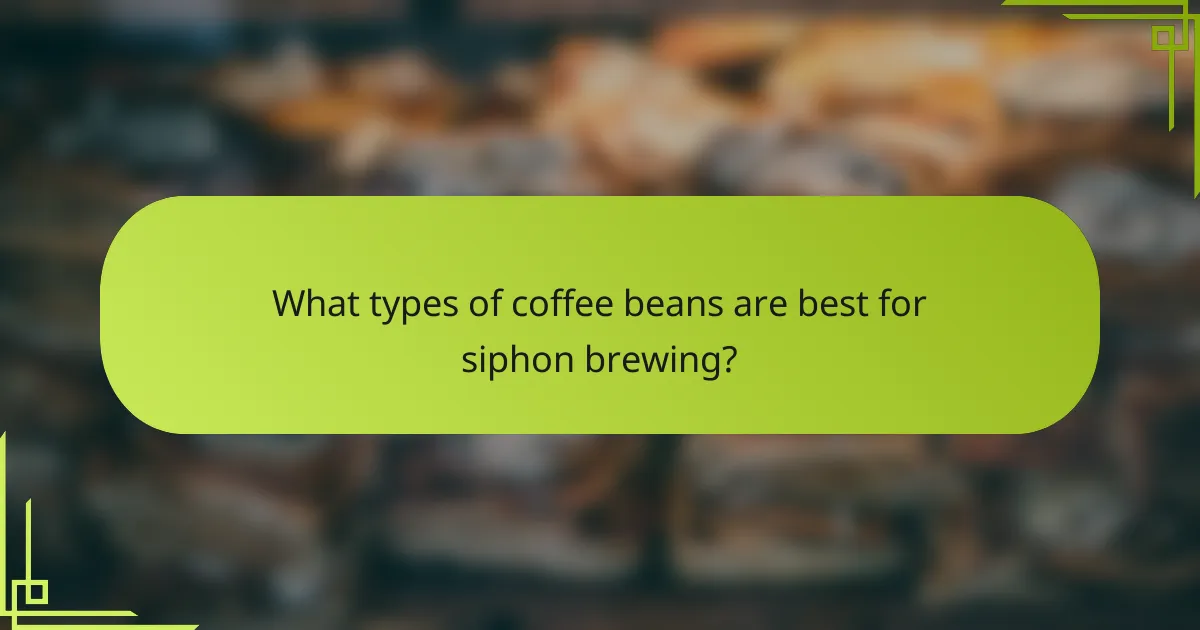
What types of coffee beans are best for siphon brewing?
The best coffee beans for siphon brewing are typically high-quality, fresh beans that can showcase the unique flavors of this method. Single-origin and medium roast beans are often preferred, as they allow for a more pronounced taste profile and complexity.
Single-origin beans
Single-origin beans are sourced from a specific region, farm, or even a single lot, which can highlight distinct flavor characteristics. For siphon brewing, consider beans from regions like Ethiopia, Colombia, or Kenya, as they often present vibrant acidity and fruity notes that shine through in the final cup.
When selecting single-origin beans, look for those that have been recently roasted to ensure maximum freshness and flavor. Experimenting with different origins can lead to a diverse tasting experience, making each brew unique.
Medium roast recommendations
Medium roast coffee beans strike a balance between acidity and body, making them ideal for siphon brewing. They retain some of the original flavors of the beans while also developing a richer profile through the roasting process.
Popular medium roast options include beans from Central America, such as Guatemala or Costa Rica, which often exhibit chocolate and nutty flavors. These roasts can enhance the siphon brewing experience by providing a smooth, well-rounded cup.
Flavor notes to consider
When choosing coffee beans for siphon brewing, consider flavor notes that complement the brewing method’s clarity and brightness. Look for beans with tasting notes like citrus, floral, or berry, as these can be accentuated by the siphon process.
Avoid overly dark roasts, as they can mask the delicate flavors that siphon brewing can highlight. Instead, focus on beans that offer a balance of sweetness and acidity to create a complex and enjoyable cup.

How does the vacuum method work in siphon coffee?
The vacuum method in siphon coffee utilizes vapor pressure and vacuum to brew coffee, creating a theatrical experience while extracting complex flavors. This method involves heating water in a lower chamber, which forces it into an upper chamber containing coffee grounds, and then cooling it to create a vacuum that draws the brewed coffee back down.
Principle of vacuum brewing
The vacuum brewing process relies on the principles of vapor pressure and atmospheric pressure. When water is heated in the lower chamber, it vaporizes and creates pressure that pushes the water into the upper chamber where coffee grounds are steeped. Once the heat is removed, the vapor condenses, creating a vacuum that pulls the brewed coffee back down through a filter.
This method not only showcases the brewing process but also allows for precise control over brewing time and temperature, which are crucial for optimal flavor extraction. The visual aspect of the brewing process adds to the enjoyment, making it a popular choice for coffee enthusiasts.
Impact on flavor extraction
The vacuum method significantly impacts flavor extraction by allowing for a balanced and nuanced profile. The brewing temperature can be adjusted, typically ranging from 90°C to 95°C, which influences the solubility of different compounds in the coffee. This results in a clean cup with bright acidity and rich flavors.
Moreover, the short brewing time, usually around 2 to 4 minutes, helps to prevent over-extraction, which can lead to bitterness. The use of fresh, coarsely ground coffee enhances the extraction process, ensuring that the complex flavors are fully realized without unwanted harshness.

What are the best siphon coffee makers available?
The best siphon coffee makers combine functionality, design, and brewing performance. Popular models include the Hario Technica, Yama Glass, and Breville BDC450, each offering unique features that cater to different brewing preferences.
Hario Technica
The Hario Technica is renowned for its elegant design and reliable performance. It typically features a borosilicate glass construction that withstands high temperatures, ensuring durability while allowing you to monitor the brewing process.
This siphon coffee maker operates on a simple vacuum principle, where water is heated in the lower chamber, creating vapor pressure that forces it into the upper chamber containing coffee grounds. Once the heat is removed, the brewed coffee is drawn back down, resulting in a clean and flavorful cup.
Yama Glass
The Yama Glass siphon coffee maker is appreciated for its artisanal craftsmanship and aesthetic appeal. Available in various sizes, it often comes with a wooden base that adds a touch of elegance to any kitchen or café setting.
Similar to other siphon models, Yama utilizes the vacuum brewing method, but its design allows for a slightly different brewing time and temperature control. This can lead to distinct flavor profiles, making it a favorite among coffee enthusiasts who enjoy experimenting with their brews.
Breville BDC450
The Breville BDC450 stands out for its modern features and user-friendly design. It includes a built-in heating element and precise temperature control, making it easier to achieve consistent results with every brew.
This model simplifies the siphon brewing process by integrating digital controls, allowing users to set brewing times and temperatures easily. While it may come at a higher price point, the convenience and quality it offers can justify the investment for serious coffee lovers.
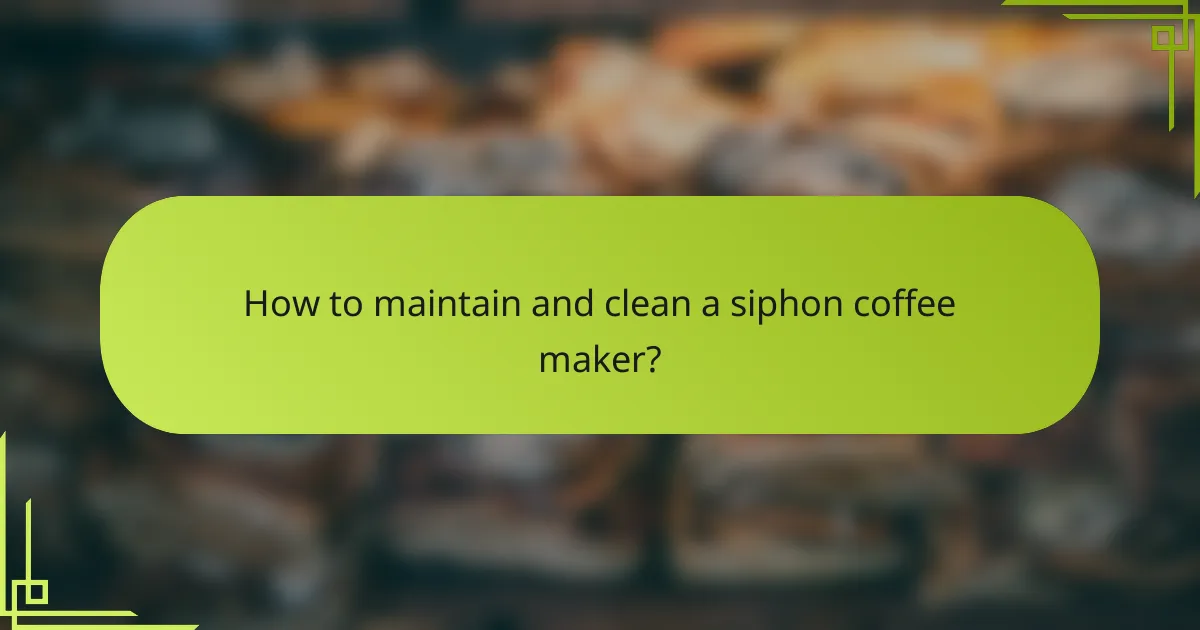
How to maintain and clean a siphon coffee maker?
To maintain and clean a siphon coffee maker, regularly wash all components and inspect seals for wear. Proper care ensures optimal performance and flavor extraction over time.
Cleaning tips for glass components
Glass components should be cleaned after each use to prevent coffee oils from building up. Use warm, soapy water and a soft sponge to gently scrub the glass. Avoid abrasive materials that could scratch the surface.
For stubborn stains, a mixture of baking soda and water can be effective. Soak the affected parts for a few minutes, then rinse thoroughly to remove any residue.
Maintaining rubber seals
Rubber seals are crucial for maintaining the vacuum in a siphon coffee maker. Inspect them regularly for cracks or signs of wear, as damaged seals can lead to leaks and affect brewing efficiency.
To prolong the life of rubber seals, clean them with a damp cloth and avoid exposing them to extreme temperatures. If a seal appears worn, consider replacing it to ensure a proper fit and maintain brewing quality.
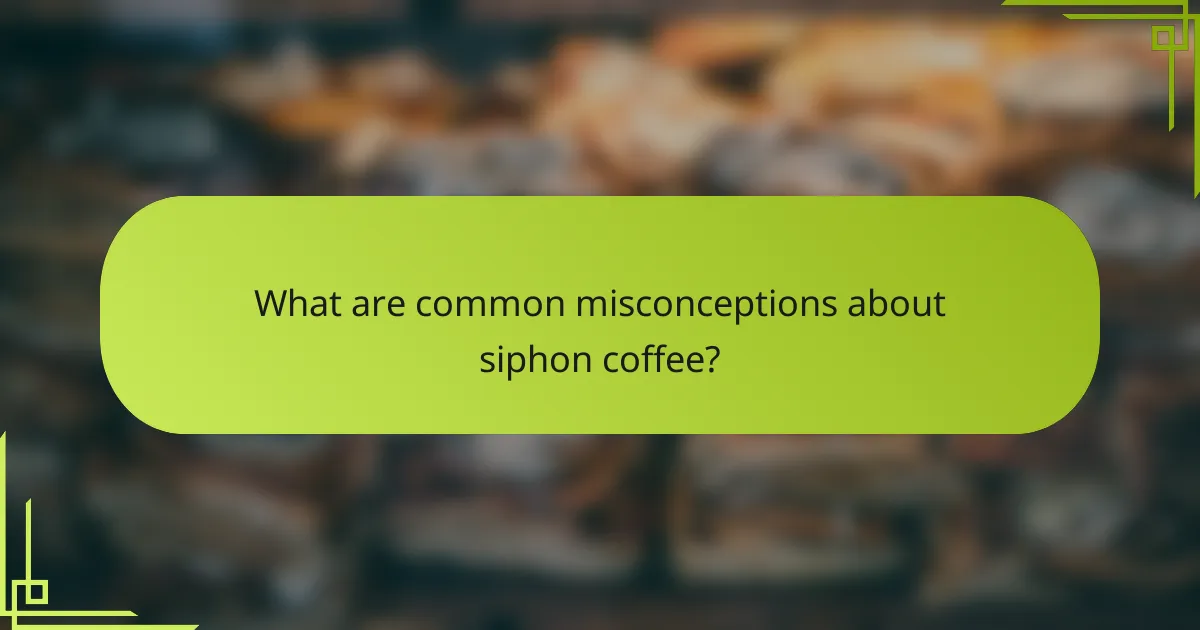
What are common misconceptions about siphon coffee?
Many people mistakenly believe that siphon coffee is overly complicated or that it requires specialized skills. In reality, while the vacuum brewing method can seem theatrical, it is accessible and can produce rich, complex flavors with a bit of practice.
Siphon coffee is too complicated to make at home
While siphon coffee does involve a unique brewing process, it is not as difficult as many think. The key steps include assembling the siphon, adding water and coffee grounds, and applying heat. With a little patience and practice, anyone can master this method.
You need expensive equipment for siphon brewing
While high-end siphon coffee makers can be pricey, there are affordable options that still yield great results. Basic siphon brewers can be found at reasonable prices, often ranging from $30 to $100. Investing in a quality grinder and fresh coffee beans is often more important than the brewer itself.
Siphon coffee lacks flavor complexity
Another misconception is that siphon coffee does not offer the depth of flavor found in other brewing methods. In fact, the vacuum brewing process extracts oils and compounds from the coffee grounds, resulting in a clean and aromatic cup. Experimenting with different coffee types and grind sizes can enhance the flavor profile significantly.






